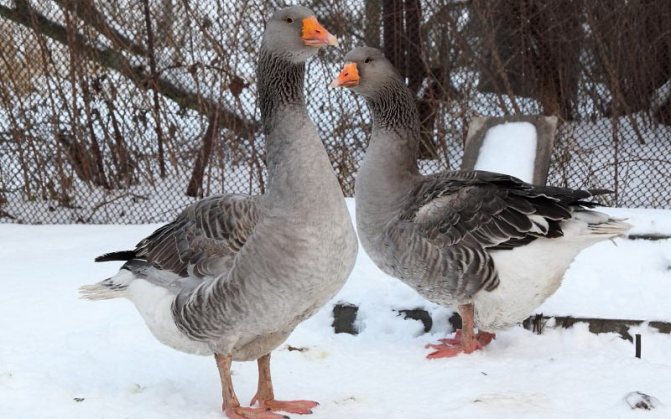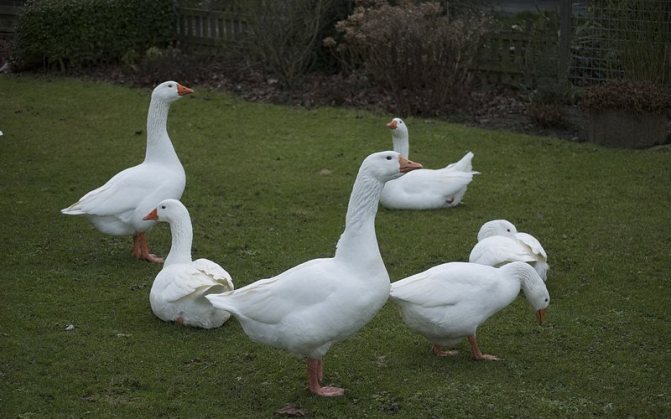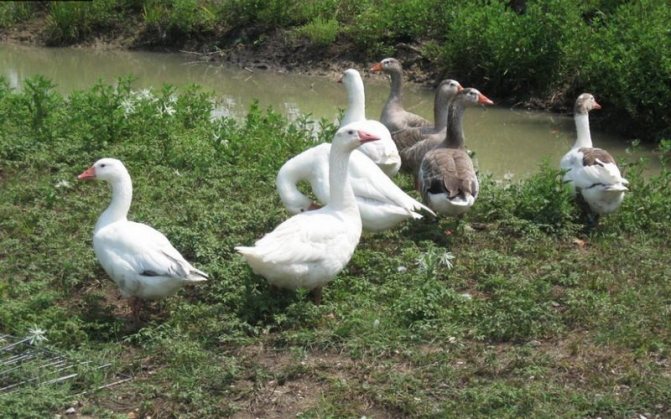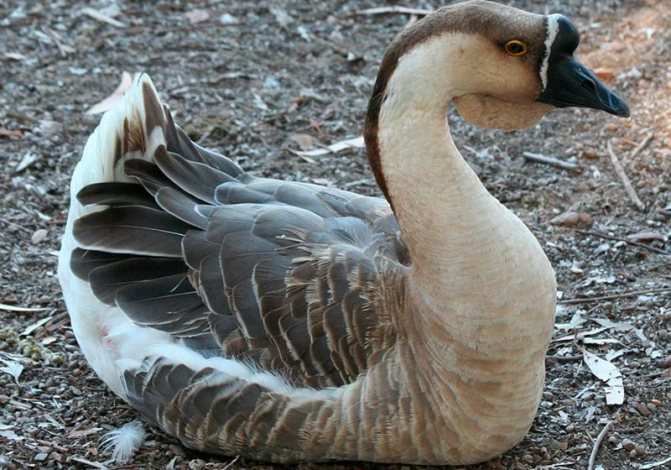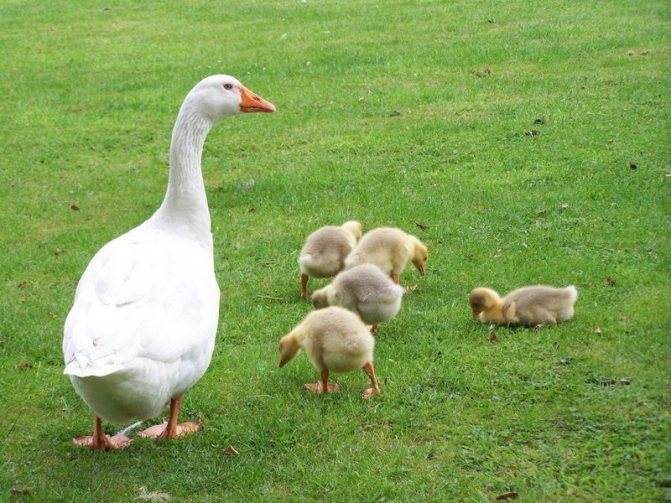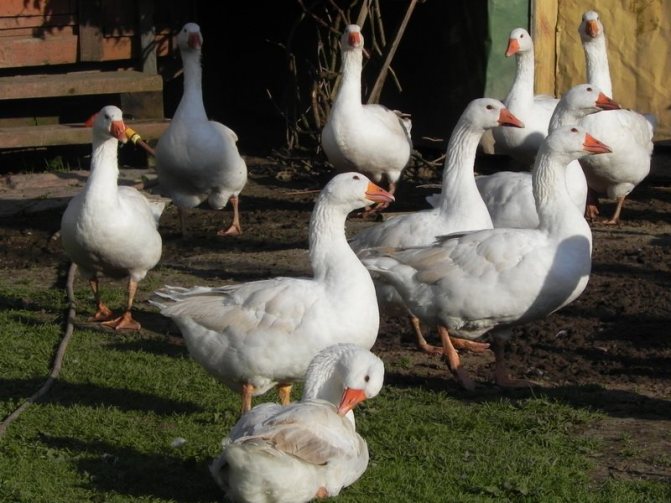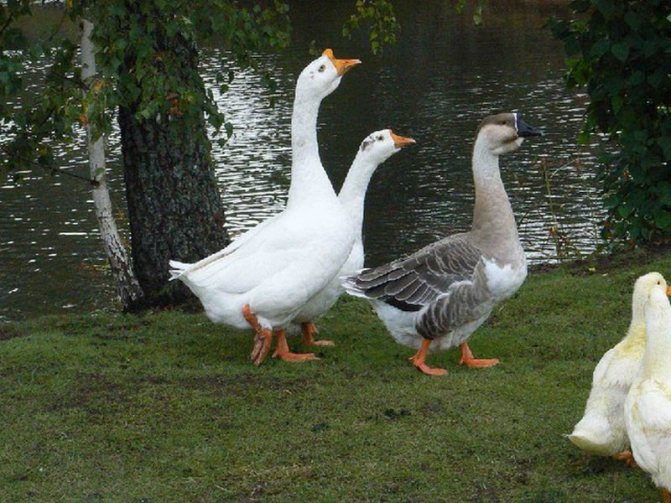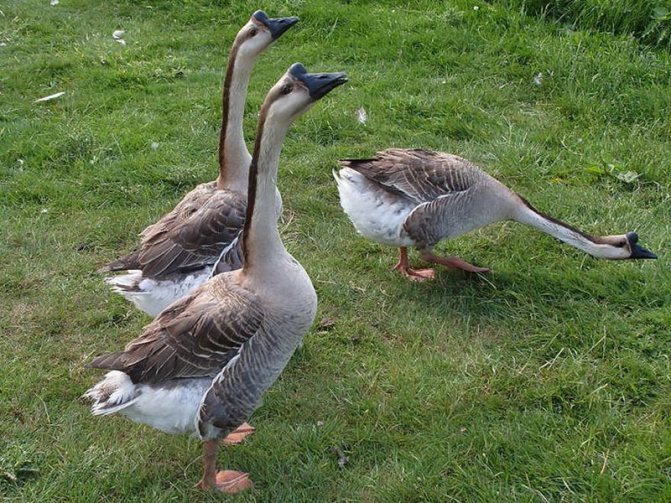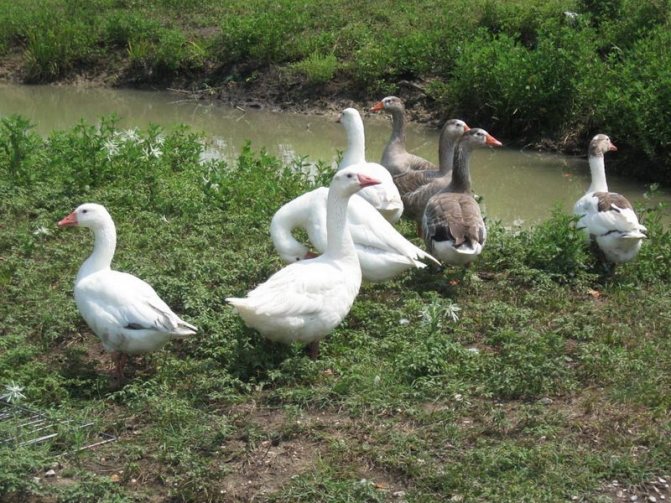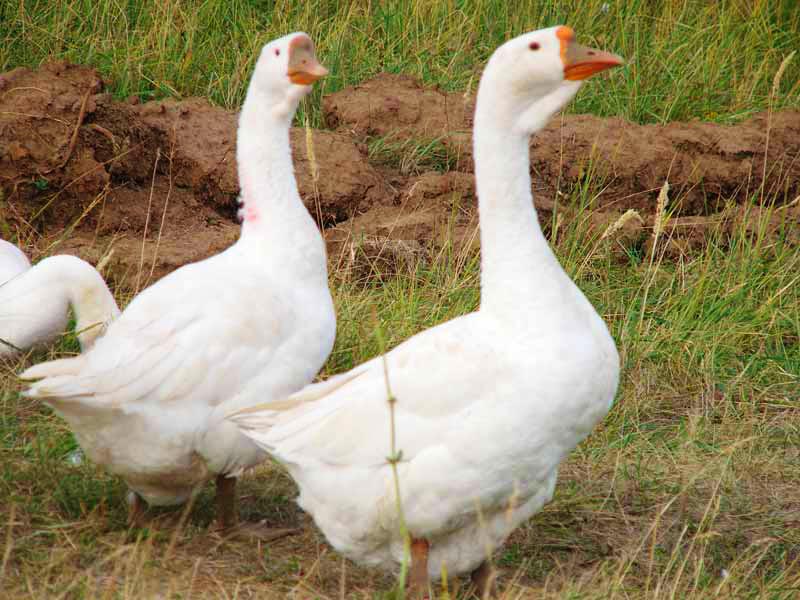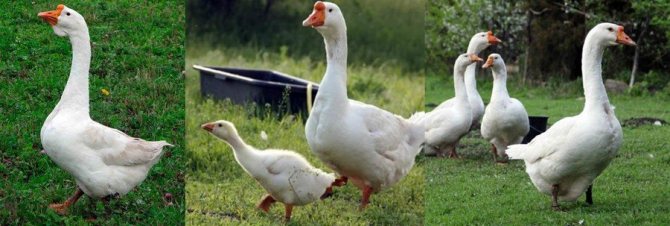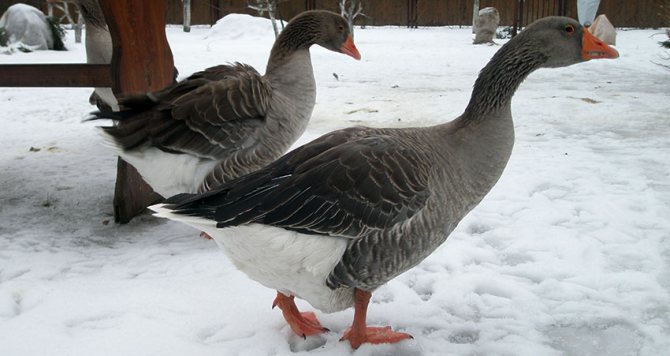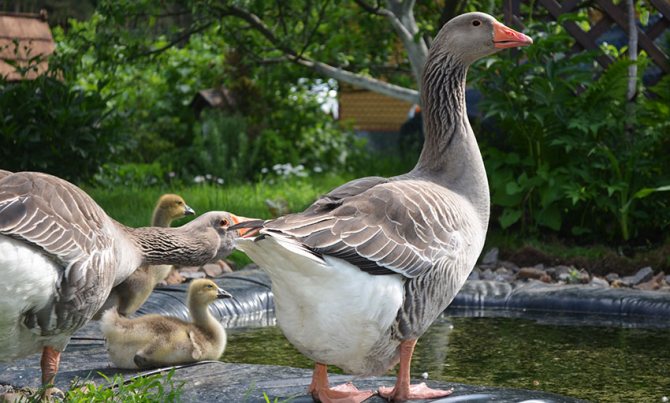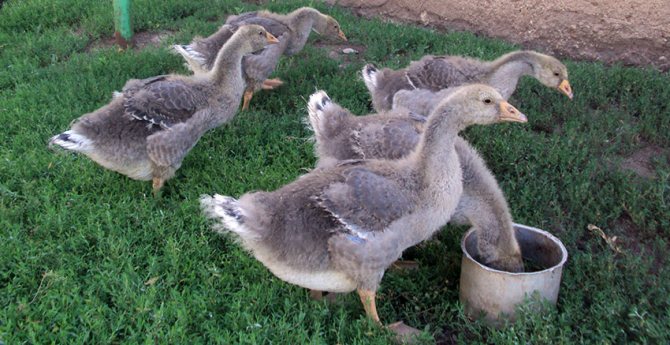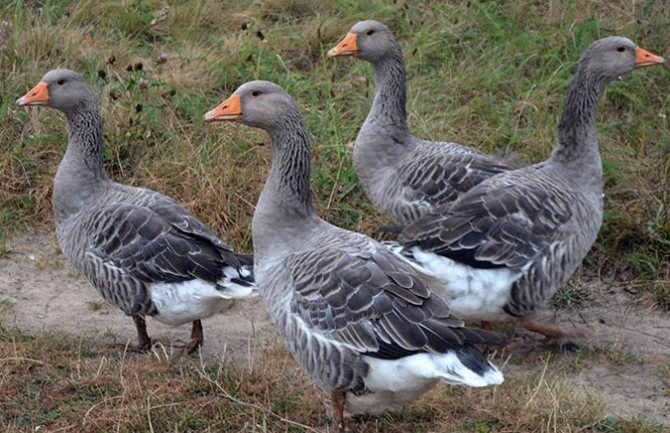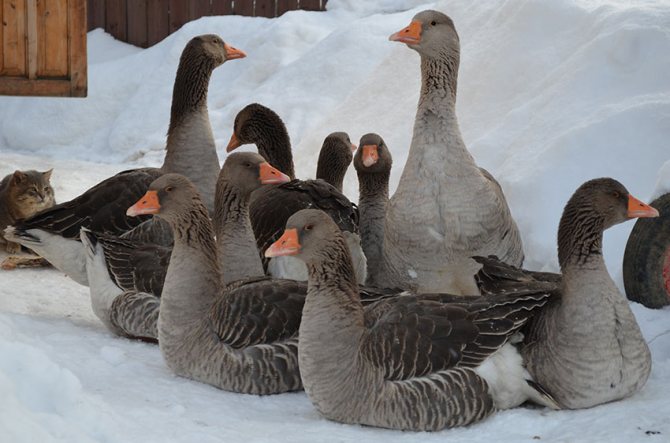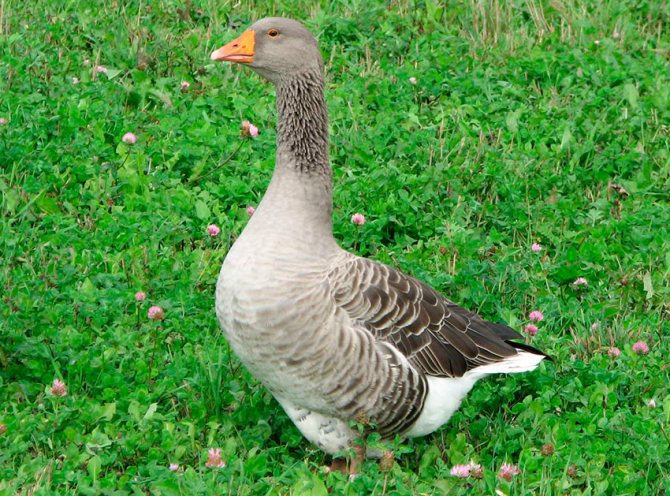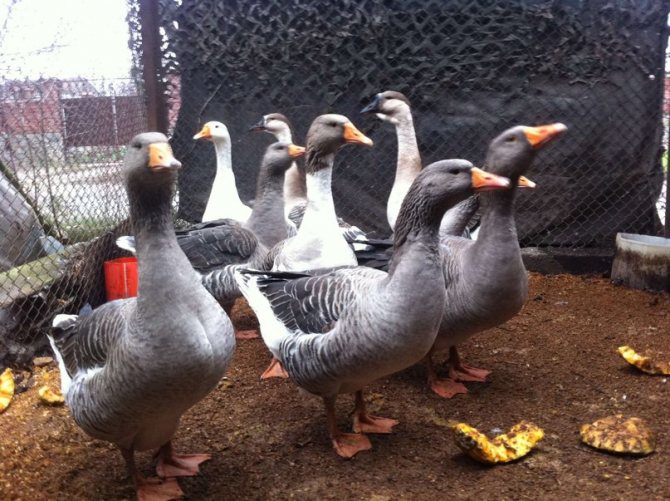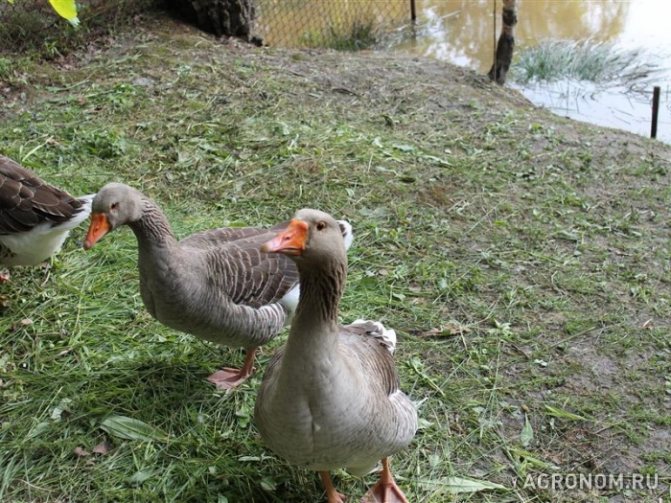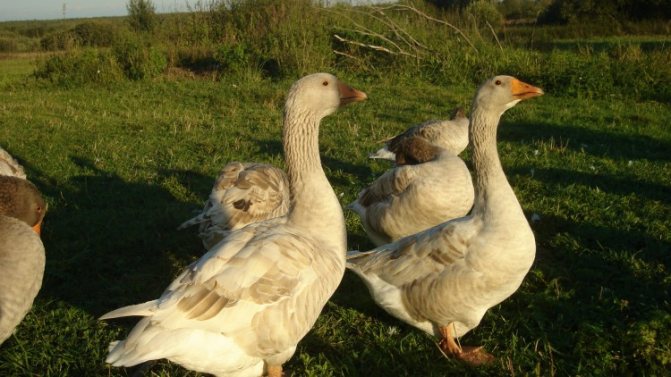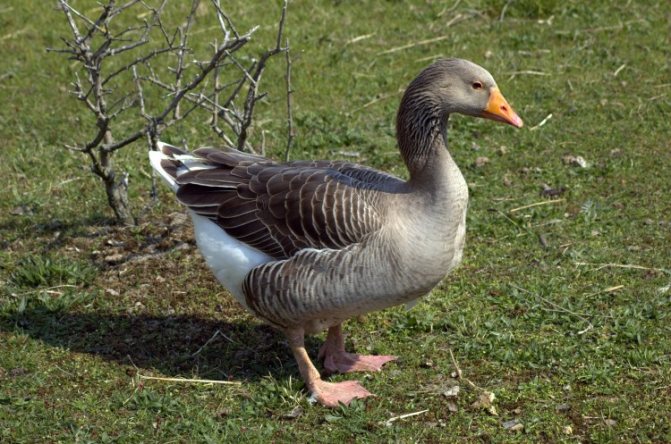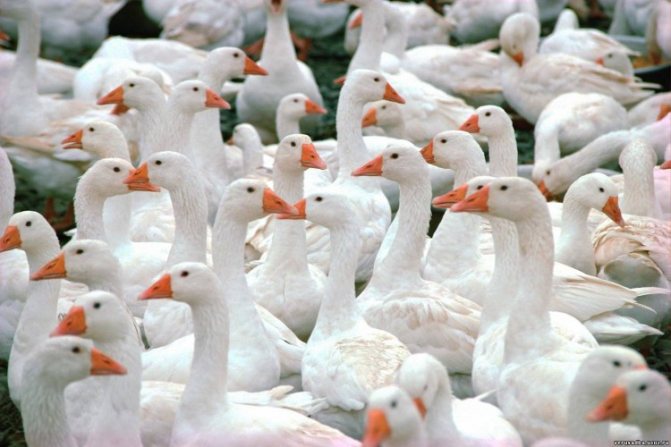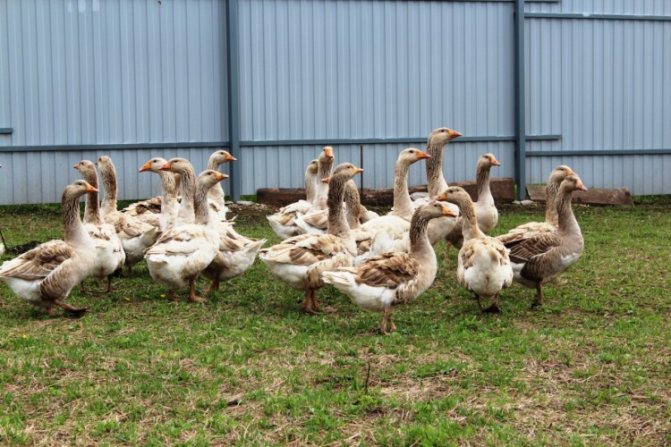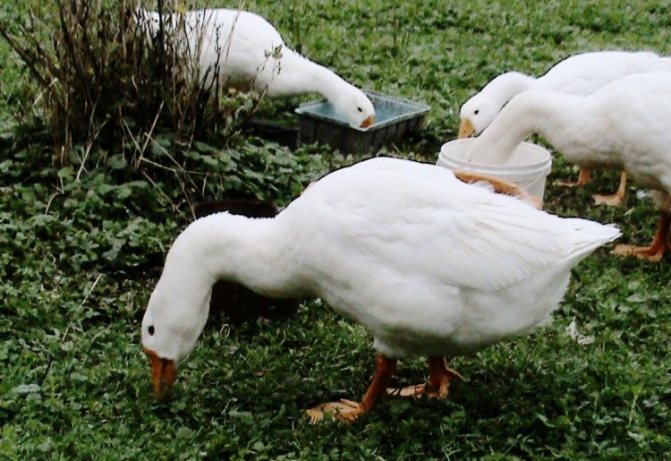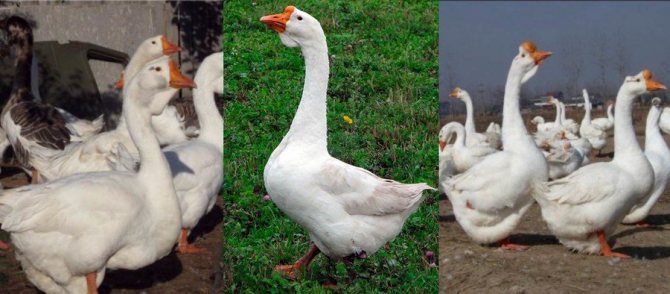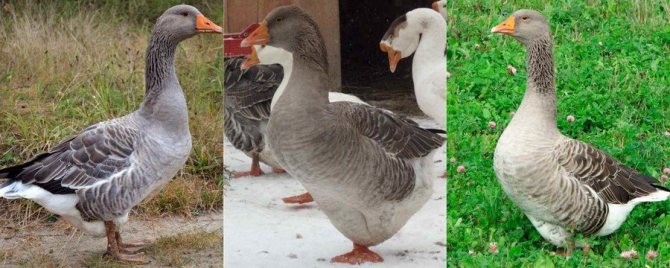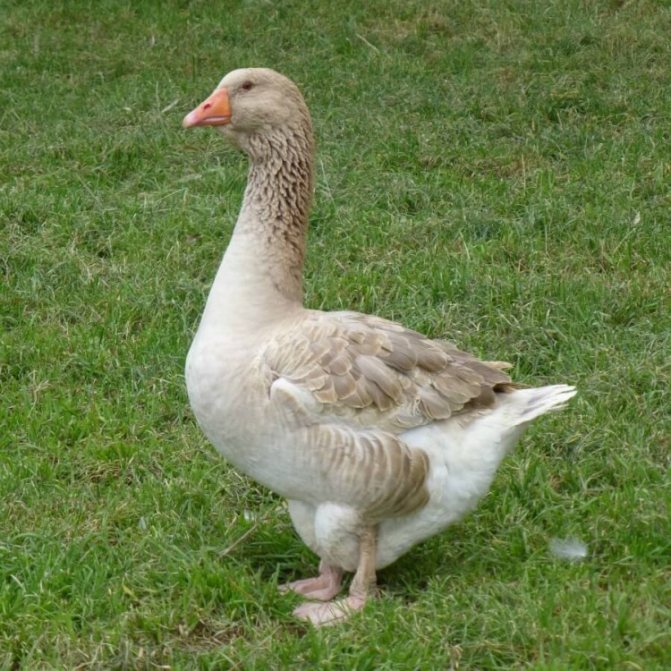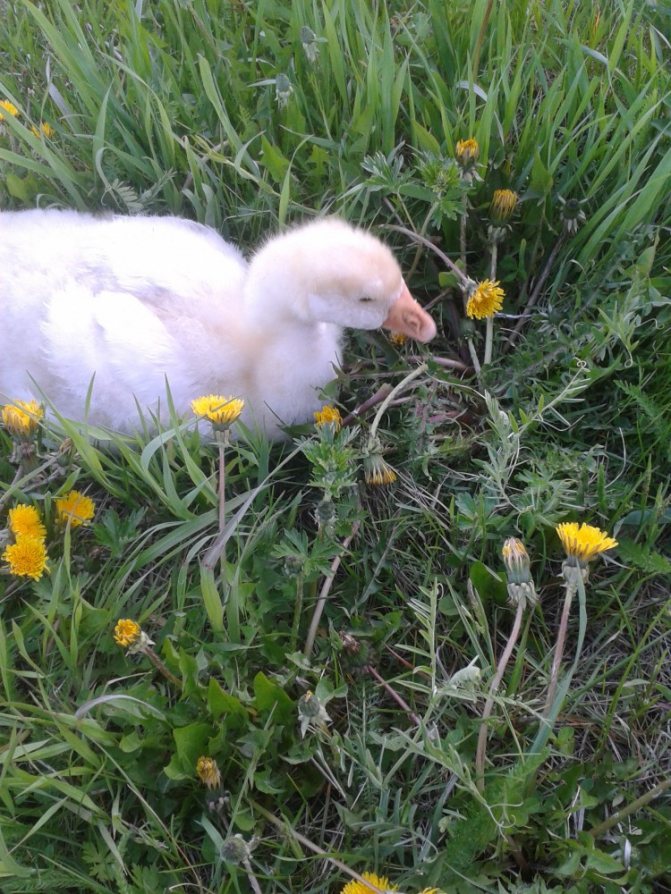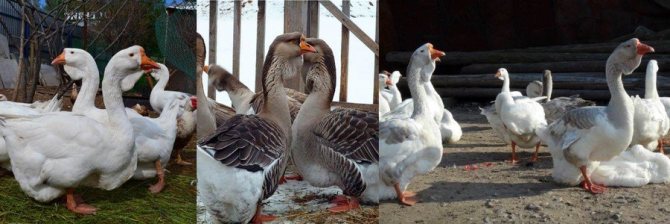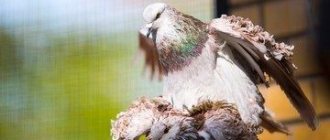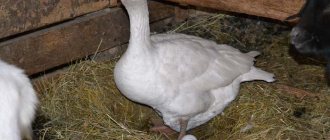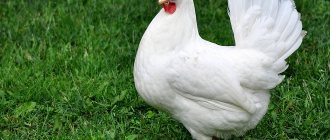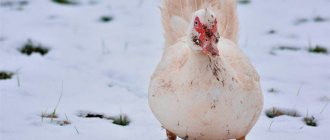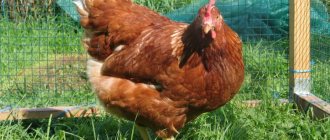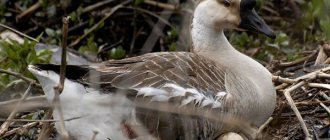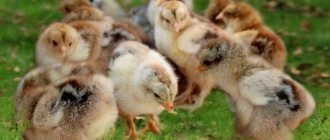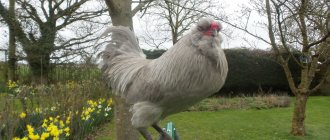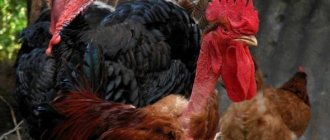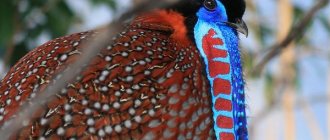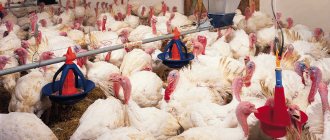Geese are very common poultry that can be successfully bred regardless of the climatic zone. In terms of popularity, they are second only to chickens. They are distinguished by their unpretentiousness to feed and living conditions. They can be fed not only on pastures, but also indoors or even in cages. In the absence of fresh food, they perfectly eat hay, food waste and various root crops. In addition, geese have a fairly long life span. At the age of two to three years, they not only do not reduce egg production, but also increase it by about twenty percent.
This article contains detailed descriptions of the most popular breeds of geese with photos and characteristics, as well as the key features of these birds that must be considered when breeding.
Kholmogory geese
The breed is exclusively for economic purposes. The bird is not practical. It is only bred for decorative purposes, since it is very expensive to maintain due to the difficulty of breeding.
In Kholmogory geese, puberty occurs at three years old, while they live for about 17 years. For poultry breeding to be a profitable business, it is necessary to adhere to the rules of hygiene, as otherwise the birds may simply die.
The disadvantage of the breed is its low egg production - 10-15 eggs per year are produced. They also have a low level of offspring survival - up to 50%. Although these qualities are appreciated in the animal.
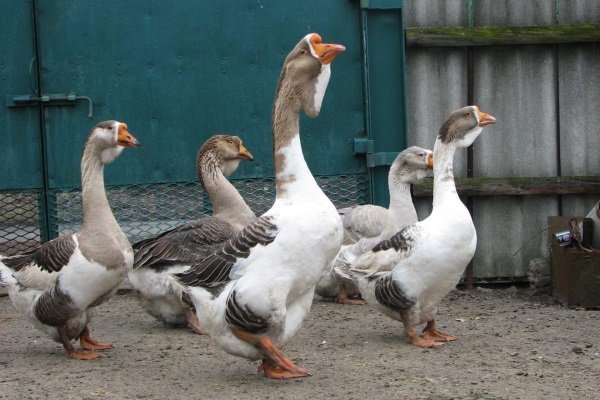
Breeding history
Large gray breed of geese - pretty young. It was bred in the fifties of the twentieth century and has a dual origin. The breeding of these geese was carried out at the Research Institute of Plant Protection of Ukraine until 1941. But in connection with the rapid advance of the German invaders, the breeding stock of these geese had to be evacuated to the Tambov region on a breeding bird. There, work continued on the formation of the Large Gray Geese breed.
Researchers were also evacuated. They resumed work on developing a new breed in which the meat and egg directions would be optimally combined. For this, the ganders of the Toulouse breed were crossed with the Romny geese. Therefore, the Large gray goose breed has two intra-breed types: Tambov steppe (Russian) and Borkovsky (Ukrainian).
Borkovskie geese
This
type of large gray goose has occurred from crossing the goose and gander of the Roman and Toulouse breeds, respectively. The experimental crossing period lasted three years. The first three generations of geese, which were obtained from such parents, were again crossed with the Toulouse gander and the hybrids were bred, as they say, poultry farmers "in themselves". Borkovsky young growth was kept and fed in the pasture. Concentrated industrial feeds were used exclusively as additives. The large gray goose breed of the Borkovsky type stands out for its egg production, which increases up to the age of five.
Gallery: large gray breed of geese (25 photos)
Tambov gray geese
This intra-breed type occurred from crossing the Toulouse and Romanesque breeds of gander and goose respectively. After a single crossing of these breeds, the resulting hybrids were bred “in themselves”.In order to obtain a breed suitable for breeding in steppe and water-poor areas, young gray geese obtained in this way were raised on pastures where there were no reservoirs. In the process of such breeding, the most productive birds were selected and selected, which made it possible to obtain the Tambov Steppe type of the Large Gray Goose breed.
Large gray (Ukrainian) breed of geese
The bird species attracts with its extraordinary appearance. Geese feed quickly, are unpretentious in care and food, have a large body, calm character and good health.
Adult geese can gain weight up to 7 kg, sometimes up to 9 kg. Females can lay up to 60 eggs per year, egg hatchability is 70%. This is an excellent poultry for fattening and fatty liver.
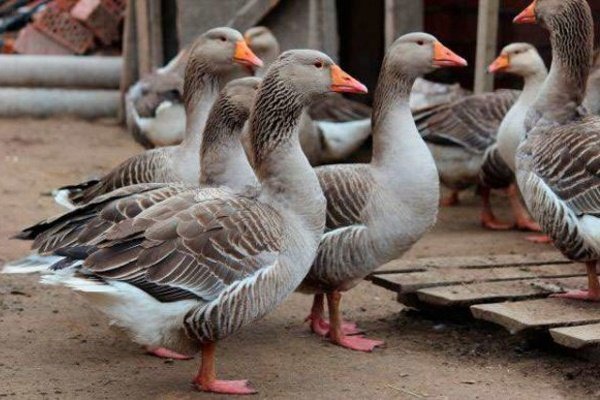

Preparing for the cold
To keep Large Gray Geese in winter, it is necessary prepare litter and feed for future use... Until spring, one adult needs about 15 kg of hay, preferably clover or alfalfa. Do not forget about root crops (about 35 kg per goose), most of which should be carrots. In addition, in the summer, branch fodder is harvested from alder, birch or aspen. In winter, crushed leaves are added to wet food, and steamed branches are suspended at a low height in a room where birds are kept. Many owners add aquatic vegetation to their feed in the form of grass meal, which is harvested in the summer. And also each adult goose in winter will need about 40 kilograms of bedding material.
Toulouse breed of geese
The animal has French roots. This bird is black in color, its weight reaches 12 kg, the goose weighs about 7 kg. The liver is also in demand, the weight of one product is up to 0.5 kg.
The goose is famous for its high growth rates, excellent weight gain, and unpretentious nutrition. Toulouse people are appreciated for the quick set of fat reserves and the quality of the fluff.
The purpose of keeping this bird is to obtain meat, fluff, liver for making pate. It is recommended to bake such a bird with apples during the Christmas period. The disadvantage of Toulouse geese is the harsh conditions of detention. The house must be at least 20 degrees, the room must be protected from drafts. It is important to maintain moisture.
Cons of the breed: low egg production and percentage of offspring survival, sensitivity to temperature changes, the presence of drafts, high humidity, lack of maternal instinct.
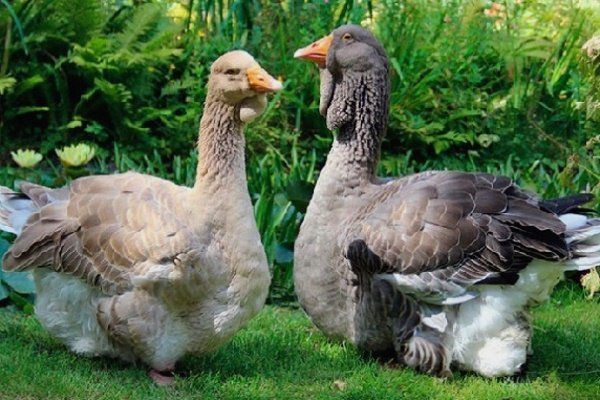

Features of character and behavior
The gray goose is a schooling bird, and there is a strict hierarchy in the herd. Geese communicate not only with the help of sounds of different frequencies and volumes.
There are certain gestures that signal danger. The flock reacts to them very quickly. The gray goose, unlike chickens and ducks, becomes attached to the person caring for it.
Geese are distinguished by rancor and resentment: at any opportunity, they can take revenge. However, it is worth knowing that this bird does not rush at anyone for no reason. Compared to chickens and ducks, geese are not so fussy, behave calmly in the courtyard, do not scatter to the sides, but keep crowded, which makes it easier to manage them.
Italian white breed
This variety comes from sunny Italy. The birds are accustomed to warm climates, but they can perfectly adapt to any urban environment. Birds attract attention with blue eyes, snow-white plumage, bright orange beak and paws.
It features a long neck, wings and tail. This breed can be characterized by its harmonious constitution. Italian white bird of medium size. By 16 weeks, the goose is gaining weight up to 4 kg. During this period, you can send geese to the slaughter. Adult birds can reach up to 6 kg.This breed is in demand for the preparation of smoked meat, since the goose does not tend to accumulate excess fat.
It brings up to 50 eggs per year, but sometimes up to 90 eggs can be collected, as the breed quickly reaches puberty and begins to lay early. Eggs can be collected twice a year. Of all the eggs, about 90% of the chicks hatch, most of which will boast excellent health.
The breed is also in demand for making liver pate, collecting down and feathers. The negative aspects of birds of this breed include the complete absence of maternal instinct. It is unlikely that it will be possible to grow this breed without an incubator.
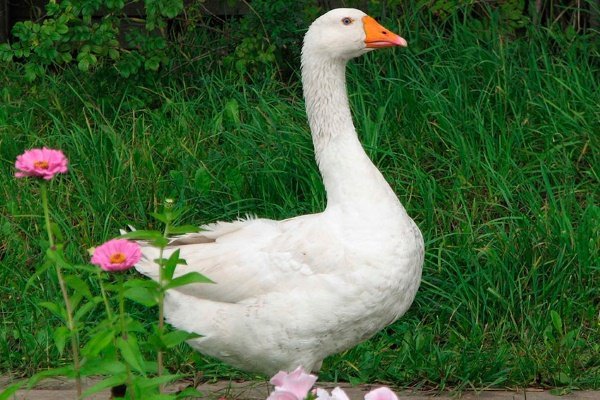

Color, deviations from the norms
In color, the bird looks the same as a wild gray goose. She has dark gray plumage. There are light areas on the back, chest and abdomen. A distinctive feature is a kind of "scales" on the back.
An acceptable deviation from the breed standard is when gray geese have one fat fold on their belly instead of two. The presence of white flight feathers and slight blurring of the pattern on the back and wings are acceptable. There may be a barely noticeable white border on the "root" of the beak.
Large gray geese are discarded if they have a lump on their forehead or a purse under their beak. If the bird has a faded beak and metatarsus, this is a serious defect. A breed defect can also be recognized by an overstated body and a small pointed chest.
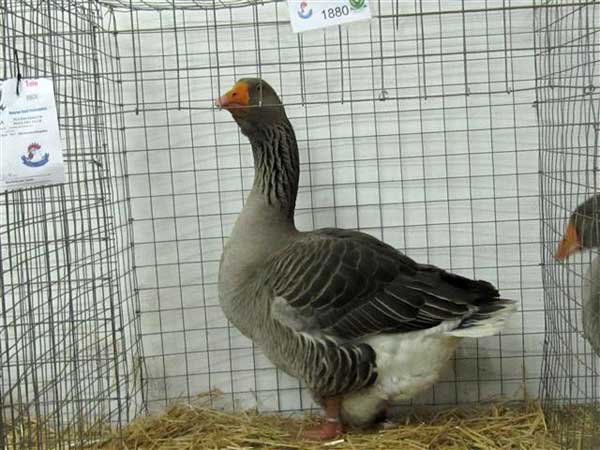

Legart Danish
Often, animals are bred for fluff. Up to 0.5 kg of down can be obtained from one bird per year. From the age of 12 months, the fluff is trimmed, repeating the procedure every one and a half months.
Legard is an affectionate and sensitive bird that needs warmth and good care. You can feed the bird throughout the year with a monotonous diet. As for the temperature regime, then it can be the same.
Disadvantages of the breed: low egg production, minimum percentage of offspring survival, the need to raise birds in an incubator.
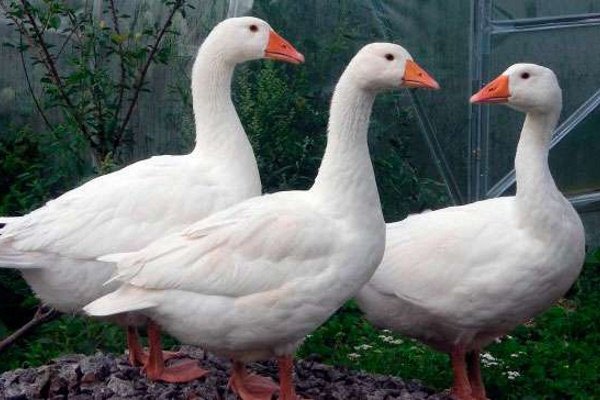

Governor's geese
This is a fresh breed, bred by crossing the Italian and Shadrinsky goose. An adult male reaches up to 4-5 kg of live weight, a goose - up to 3.5-4 kg. The laying hen brings up to 45 eggs per year. Governor's geese are distinguished by good hatchability and survival rate - more than 95%. The breed has excellent egg production and high quality meat.
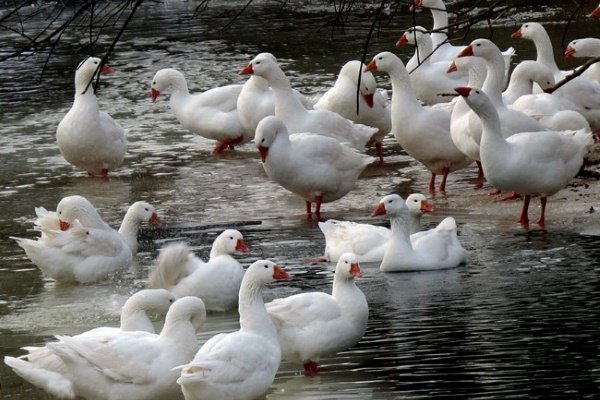

Chinese geese
A popular breed valued for its high egg production. One goose brings up to 100 eggs per year. In addition, Chinese geese are valued for their high quality meat. But it is not very profitable to breed geese for meat, since the weight of an adult male reaches only about 4-5 kg.
The disadvantages of the breed are considered to be a poorly developed maternal instinct, as well as aggressiveness during the laying of eggs. It is important to keep a close eye on the livestock.
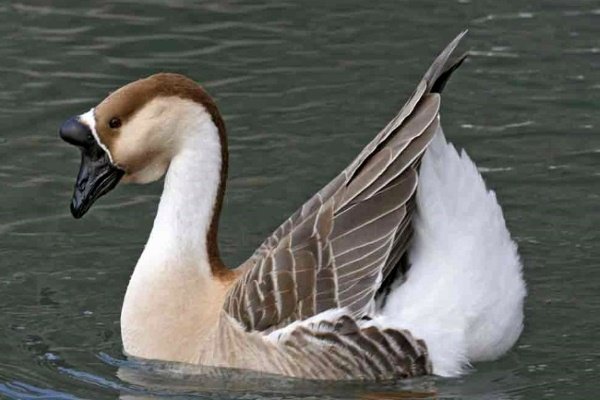

Mamut
Breed brought from Denmark. Breeding a bird is profitable for the sake of meat, the weight of the male reaches more than 13 kg, the female - up to 9 kg. The advantage of birds is good egg production - about 50 eggs per year. Geese of this breed have good survival and vitality. Disadvantages of the breed: poorly developed maternal instinct, the difficulty of enduring the absence of a reservoir.
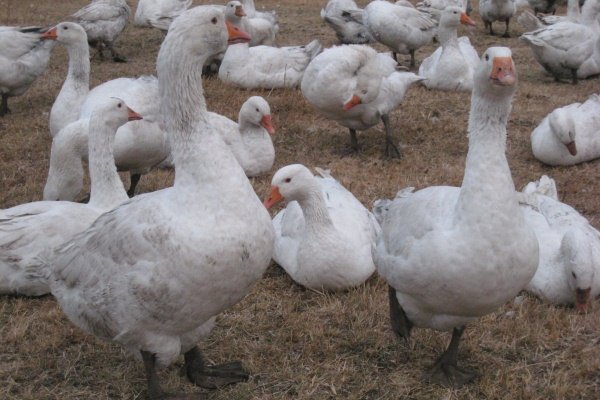

Shadrinskie geese
It is difficult to call this bird not resistant to frost, but it is important to make floors in the house that will remain warm and dry. The optimum temperature for this breed is 18 degrees. The peculiarity of the bird is not pickiness in food. When breeding geese, the farmer focuses on obtaining meat, since their weight is about 6 kg. The meat of the Shadrinsky geese is very tasty and healthy. Goose down is very hard and is not in great demand.
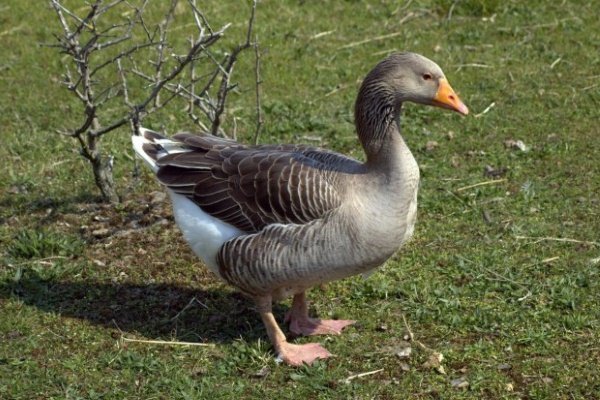

The liver of the Shadrinsky goose reaches 400 g, therefore birds are highly valued among breeders.
Goose menu
- The feeding features of the Large Gray Goose depend not only on the season, but also on the purpose of breeding the bird.In the spring and summer period, it is advisable to release geese into the open spaces of green pastures if possible. For this, not only flood meadows are well suited, but also special areas sown with forage crops. A variety of root vegetables, cake or bran can be a good addition to the main menu.
- In winter, the diet of gray geese is replenished with grain mixtures with the addition of vitamins. The house should be provided with separate chalk or gravel feeders all year round.
- In industrial breeding of geese, complete dry feed is used for feeding. But farmers practice a combined poultry feeding scheme, which includes succulent and grain feed. Large gray geese are given crushed and whole grains, and juicy feeds are finely chopped, regardless of whether they are given on their own or are part of a certain mixture.
Tula bird
A breed with a low egg production rate, and the weight of geese reaches up to 6 kg. But Tula geese are valued for their fighting qualities. Animals are easy to breed, because they are able to withstand not only severe frosts, but also extreme heat. They steadfastly endure all conditions, but you need to carefully monitor their nutrition - excess weight can cause a fighter to lose shape.
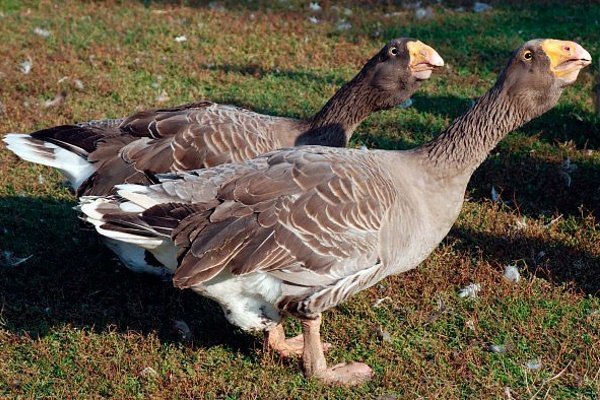

Kuban gray geese
This breed was bred by crossing Chinese and Gorky geese. The bird is no longer valued for meat, because the goose weighs in the region of 5-6 kg, and for egg production - per year, the laying hen gives up to 90 eggs, from which about 85% of the offspring are hatched. The advantage of the breed is the high survival rate of chicks. The disadvantages of the breed are the lack of maternal instinct, unwillingness to hatch eggs and raise chicks.
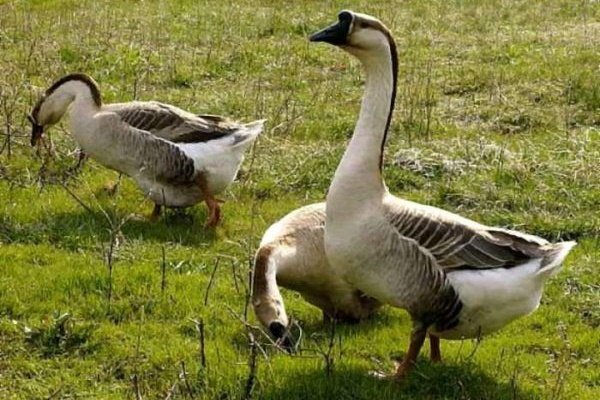

Egg production
Gray geese begin to rush at about 10 months. Depending on individual characteristics, this period can vary within 2 months in both directions. The gray goose lays eggs up to 60 pieces per season. The weight of one is about 190 g. The viability of the clutch is 60-70%.
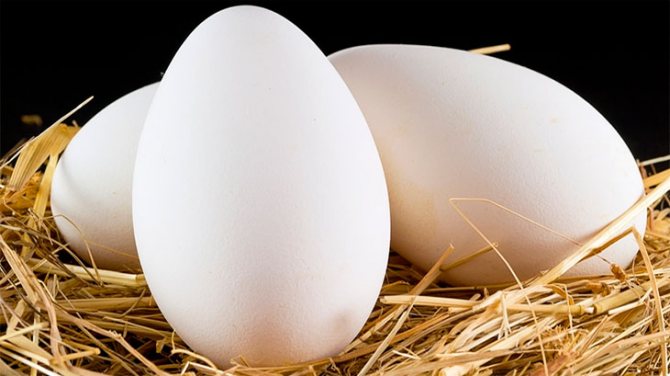

The breed gives good results when crossed with Pereyaslavl, Rhine, Chinese and Kuban geese.
Linda
Linda geese are appreciated for their quick weight gain - up to 7-8 kg. Geese reach sexual maturity at 8 months. They have an average egg production - a laying hen can bring 45-80 eggs per year. The down of birds is also considered valuable.
This is a good start for a budding farmer. The Linda breed is good for its unpretentiousness in food and care, the ability to quickly adapt to various weather conditions. With simple maintenance, you can achieve 100% profitability.
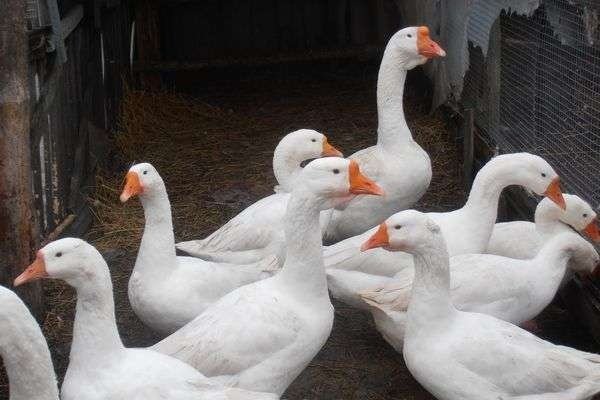

For geese to always feel good, it is necessary that there is always a lot of water in their drinkers. Due to the fact that birds prefer solitude, it is recommended to equip them with darkened nooks.
It depends on the purpose for which the poultry farmer decided to start breeding geese: to collect eggs or sell meat, you need to responsibly approach the task of choosing a breed of geese. But we must not forget that only with proper care you can get high-quality meat and large eggs for sale.
0

